Peony Splendor, Perfect Peppers, Climbing Roses and Controlling Japanese Knotweed

With lots of rain in Vermont, we have lush, overgrown growth throughout our gardens. We’ve been spending time weeding, edging, transplanting (the rain is good for that chore), and caring for all our seedlings and new plants. We’ve been dividing and moving late bloomers, such as tall garden phlox, and transplanting self sown seedlings of lettuce and calendula. It’s fun to watch it all come together as June approaches.
In our zone 5 garden peonies are coming into their splendor. We grow many varieties from the simple species types to the fluffy hybrids. We especially love the yellow flowered Itoh hybrids for the bright colored blooms. Learn more about peony varieties and growing them here.
The peppers are in and adjusting to life outside the unheated greenhouse. I have been protecting them though from cool nights. We grow a few different sweet pepper varieties and I’ve learned a few tricks over the years for growing them well. I share my experiences on growing peppers in this newsletter.
Roses are beautiful addition to any landscape, but few gardeners grow the climbing roses. That’s too bad because these flowers add color to any trellis, arch, arbor or wall and some will flower all summer. I talk about the best climbing roses to grow and how to do it in this newsletter.
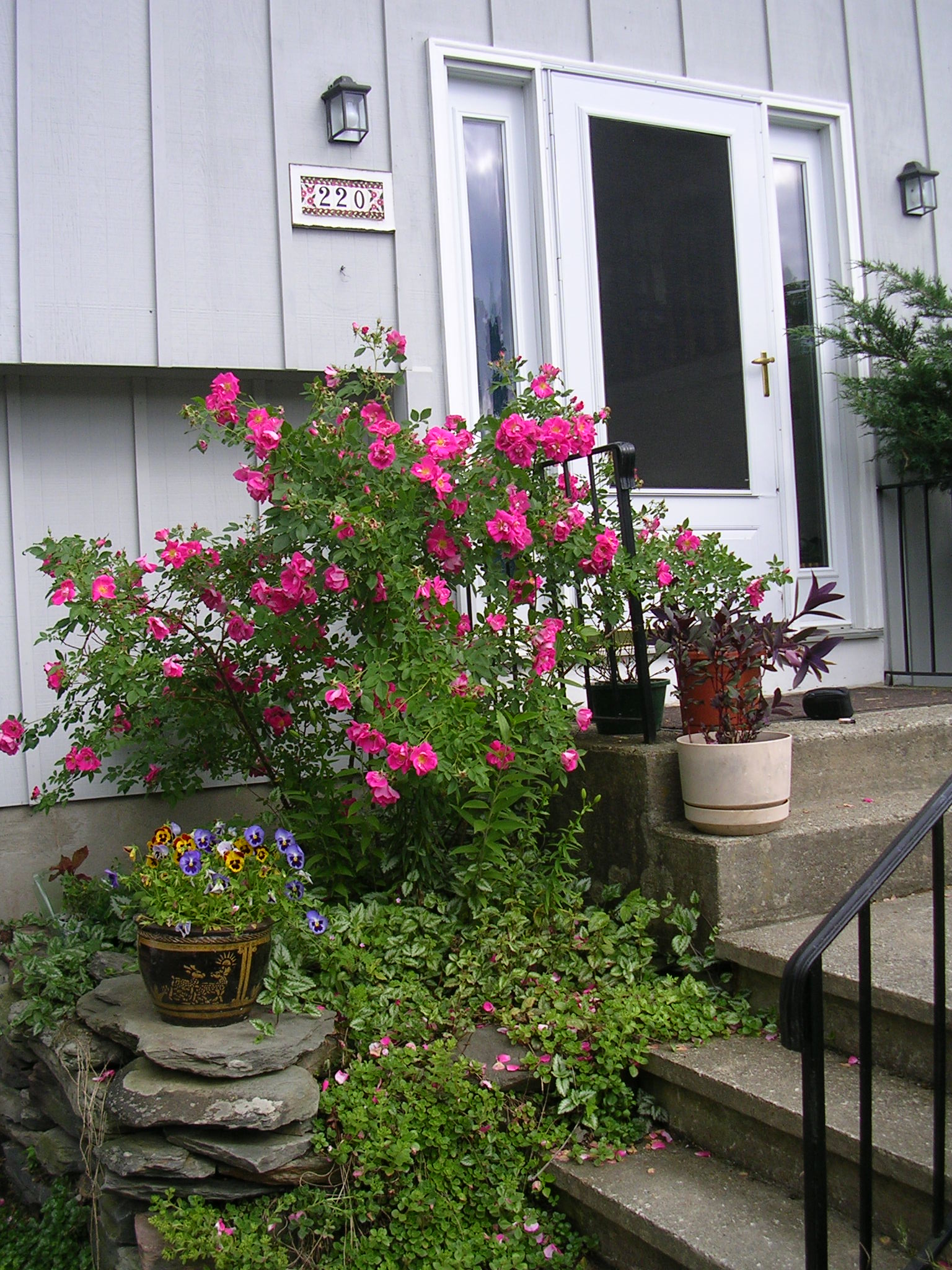
Japanese knotweed is the bane of many gardeners yards, especially if you live near water. Japanese knotweed loves to grow on stream banks and in wet areas. Unfortunately, it overwhelms the native plants with its growth and isn’t easy to remove. I talk about some Japanese knotweed control options here.
Remember to check out my monthly garden blog I write for Proven Winners called What’s Up North. The May blog features great, plant combination ideas for containers.
Until next time I’ll be seeing you, in the garden.
Charlie

Where to Find Charlie: (podcasts, TV and in-person)
- In the Garden (WCAX-TV CBS) – This week: Geraniums
- All Things Gardening on Vt Public Radio– This week: Japanese Iris
- WJOY In The Garden Podcast– This week: How to grow squash vertically, when and how to prune Rhododendrons, tackling cucumber beetles, protecting hanging baskets from the cold, and planting tomatoes and more
- Where’s Charlie Speaking? 5/21 to 5/30/25- Cultural and Garden Tour of Sardinia, Italy
How to Grow: Peonies
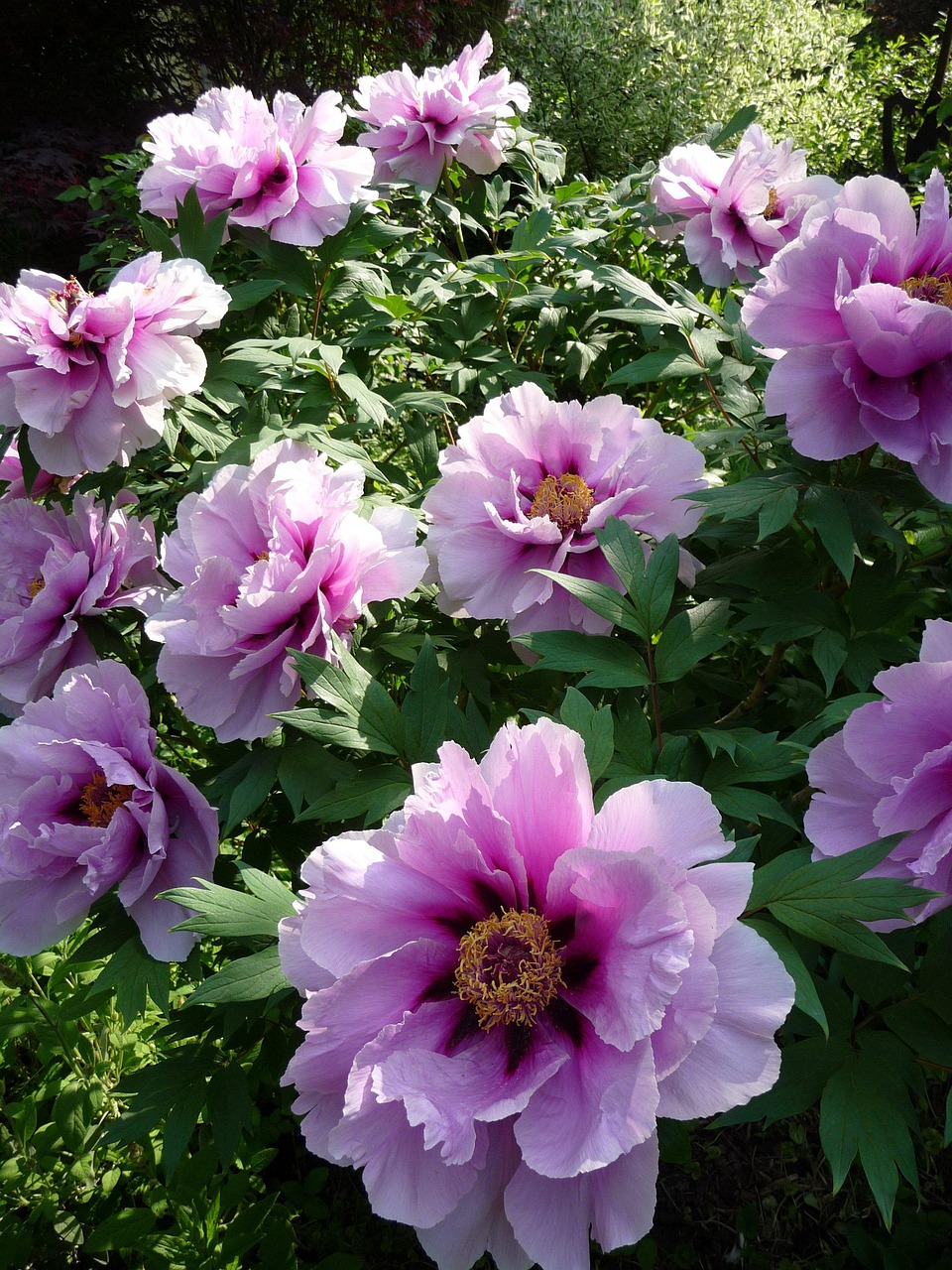
I know it’s really summer when the peonies start blooming. There’s something about these large, floppy, fragrant flowers that captures my imagination. We grow a number of different varieties with different charms to each one. ‘Karl Rosenfield’ is a classic, double red flowered plant with fragrant blooms. ‘Sarah Bernhardt’ is another classic. It has double pink flowers with a heady fragrance. It’s been around since 1906 and is known for its reliable blooms each year. One of our favorites is ‘Festiva Maxima’. This large, white flowered beauty has streaks of red on the petals giving is an artistic look. It’s known for a heady fragrance that perfumes a room when used as a cut flower. If you’re looking for some newer varieties, check out the Itoh hybrids. These are crosses between tree and herbaceous peony varieties that feature unusual colored flowers on hardy plants. ‘Garden Treasure’ is a large flowered, semi-double petaled, yellow variety with a red center. It has stiff stems so doesn’t need staking. ‘Pink Hawaiian Coral’ is an award winning variety featuring semi-double, coral colored petals with an intense fragrance. Peonies make great cut flowers. Snip the stems when the buds are still tight and before they open. You can also cut just opened flowers below the blossoms and float them in a shallow bowl of water on a table.
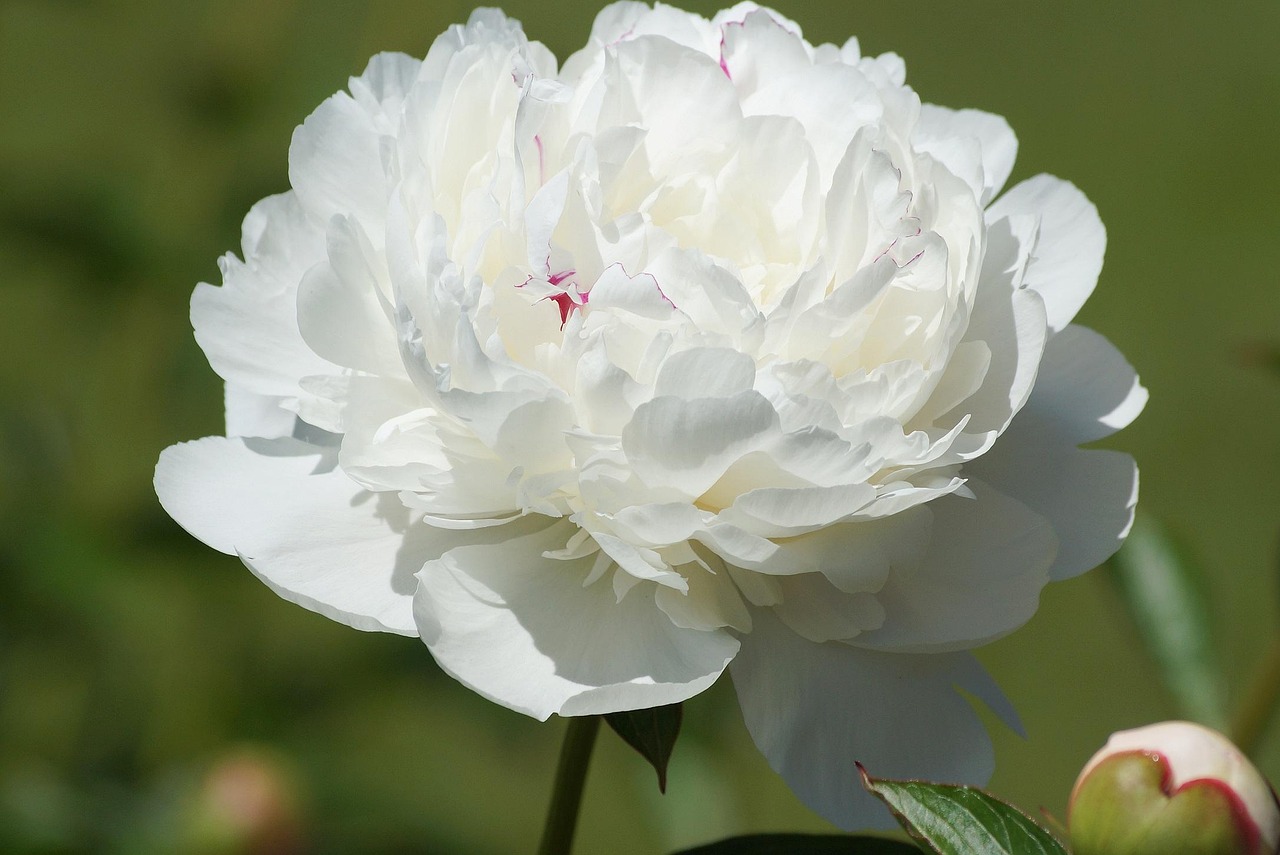
Most herbaceous peonies grow 3- to 4-feet tall on plants with a clumping habit. Most need some support or the large flowers will flop over, especially after a rain. We use metal peony cages, but stakes or chicken wire rings will also work. Peonies grow and flower best in full sun on well-drained soil. They’re long lived plants as long as they don’t end up growing in shade and the plant isn’t buried in mulch. The crown needs to be only a few inches below the soil line for best flowering.
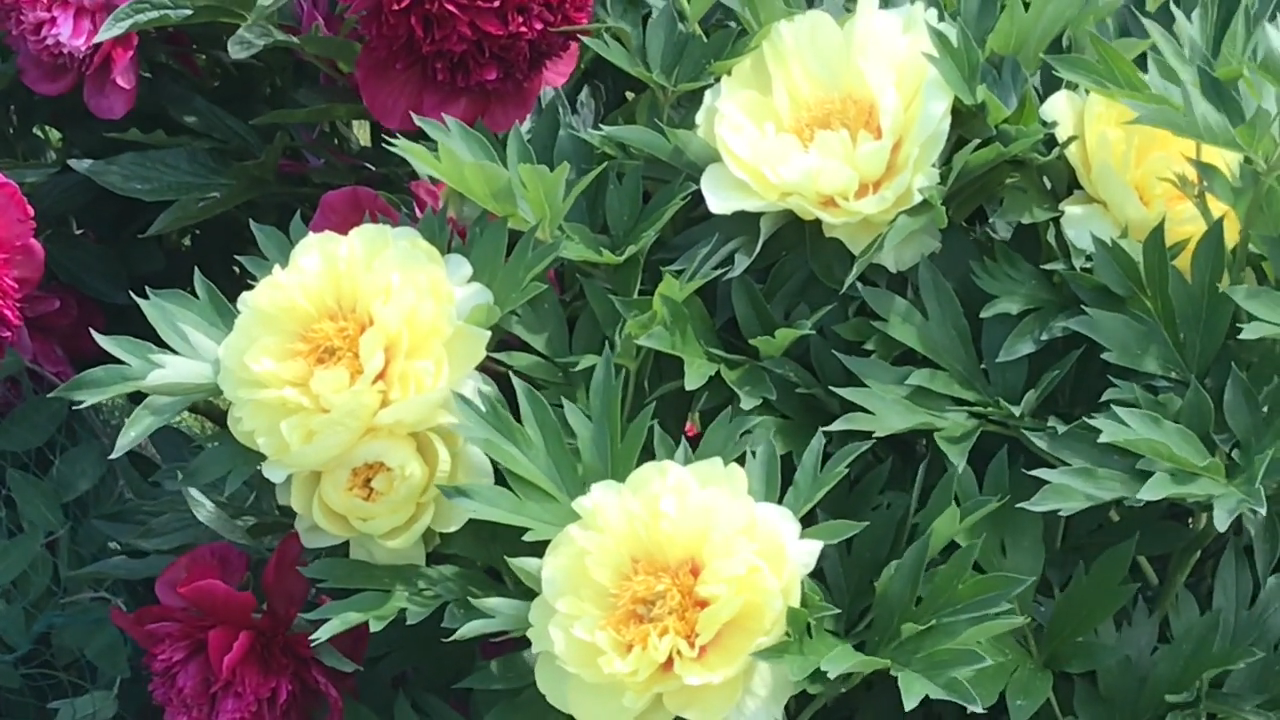
Deer and other animals don’t seem interested in peonies. But wet spring weather can lead to out breaks of fungal diseases such as botrytis blight. This sometimes causes the flower buds to rot before opening. Keep the plants growing in a well-ventilated place and spray with an organic fungicide early to reduce the intensity of this disease. You can move peonies if they start getting too shaded and stop flowering. Move them in fall to a sunnier location and again remember to not plant the crown deeper than a few inches.
Learn more about peonies here
Watch my Video about Peonies here
How to Grow: Peppers
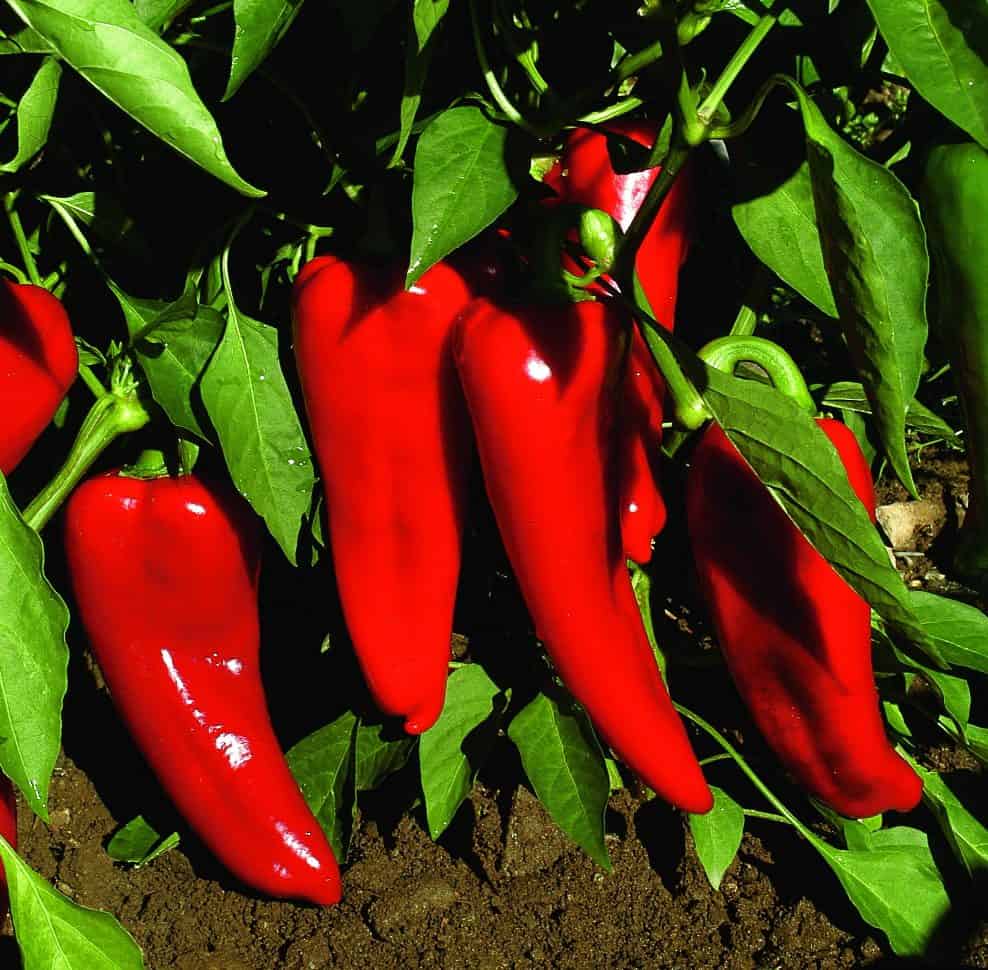
Peppers are a delight to grow in the garden. They can be so productive. Plus, you can get them to mature to their final color of red, yellow, orange, purple of chocolate for the sweetest flavor. I’m going to focus on sweet peppers here. In our sometimes cool, zone 5 summer climate, we’ve had a hard time getting regular bell peppers to fully mature. So years ago we switched to growing Italian bull’s horn type sweet peppers. These are great because they’re large enough to stuff, but mature their fruits to their final color sooner than bell peppers. Some of our favorite varieties include ‘Carmen’, Corno Di Toros’ and ‘Escamilo’. We also grow ‘Shishito’ peppers. These are harvested when green and small for grilling. They have a fabulous flavor.
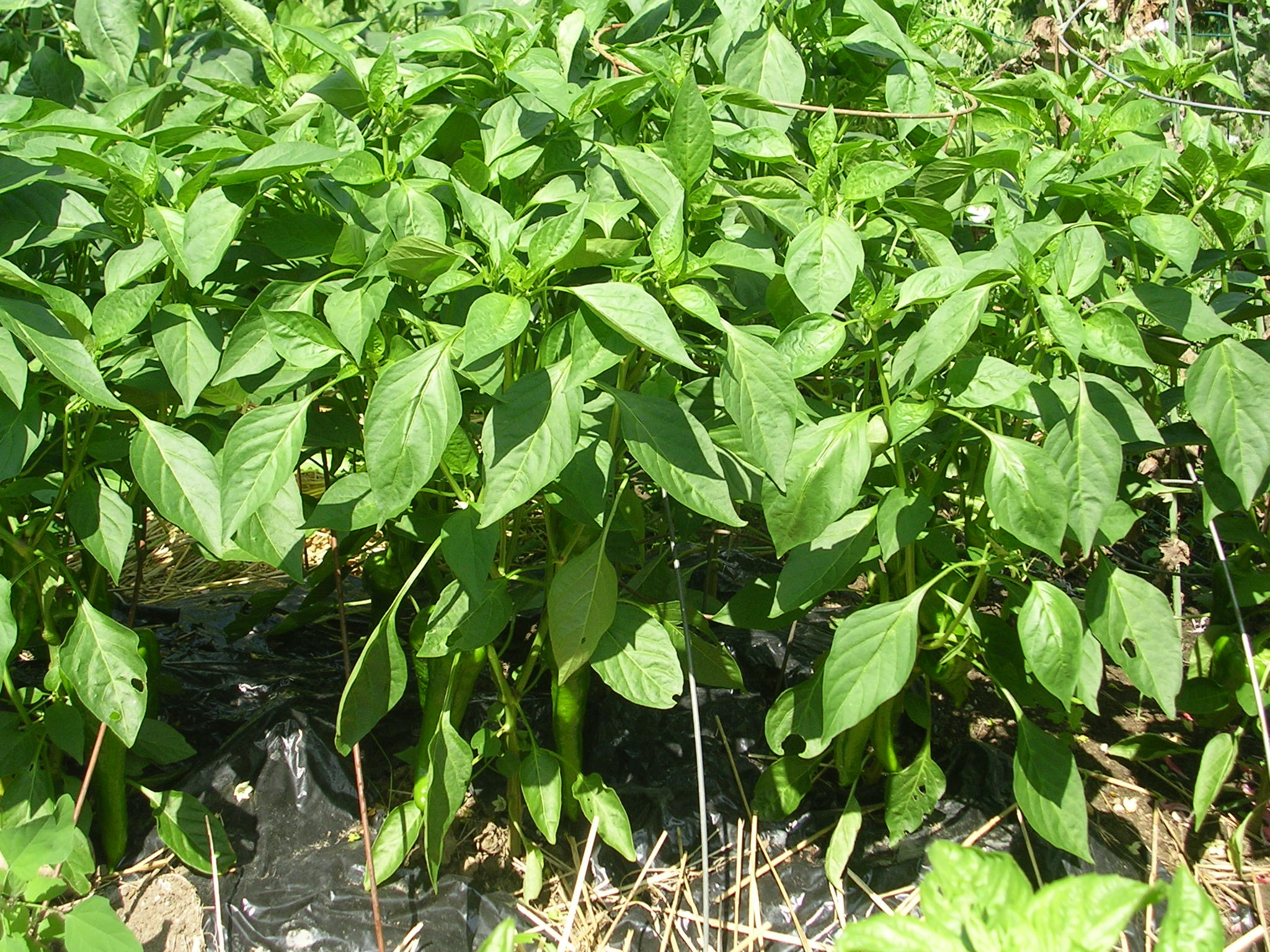
Sweet peppers are a bit more finicky with their growing needs than most hot peppers. Sweet peppers should not be rushed into the garden. They grow best with temperatures consistently in the 70Fs. If the temperatures dip below 60F the flowers won’t set. On the other side, sweet peppers don’t like the high heat. If temperatures climb above 90F, again, the flowers don’t set. Plant in full sun in raised beds with well-drained soil. Peppers like fertile soils but don’t add too much nitrogen fertilizer. I did once and the pepper plants were huge, but I had few fruits. Our pepper plants get so loaded with fruits (8-10 per plant), that we use small tomato cages to keep them from falling over. The Italian peppers will start changing to their mature color in July or early August in our garden and will continue until the weather cools.
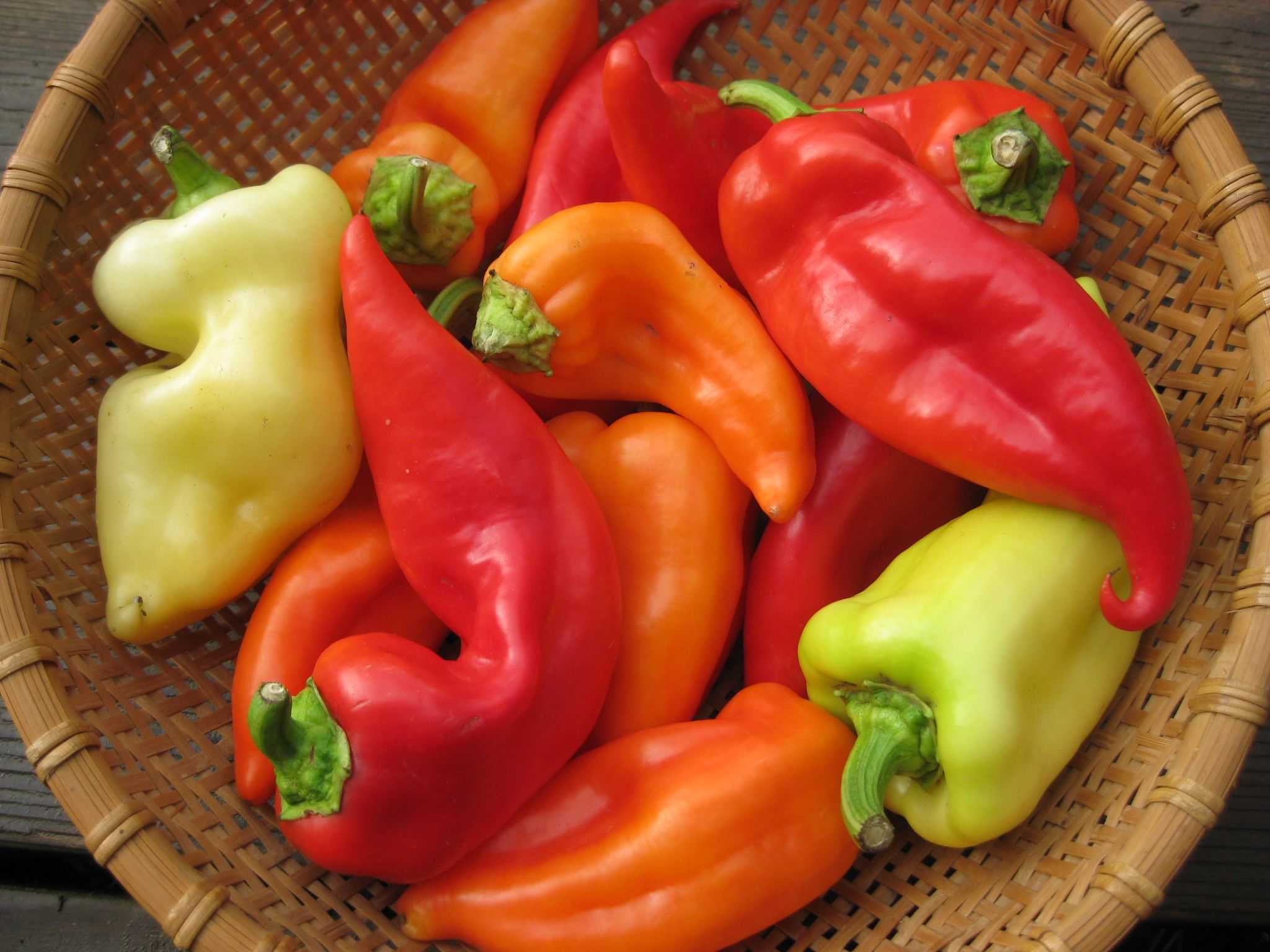
Sweet peppers have few pests. Cutworms may attack seedlings until early June. Protect seedlings with a cardboard, toilet paper roll wrapped around the stem to prevent damage. Pepper maggots may attack maturing fruits. Plant hot peppers nearby and the maggot fly will be more attracted to the hot peppers than the sweet ones.
Learn more about growing Peppers here
Climbing Roses
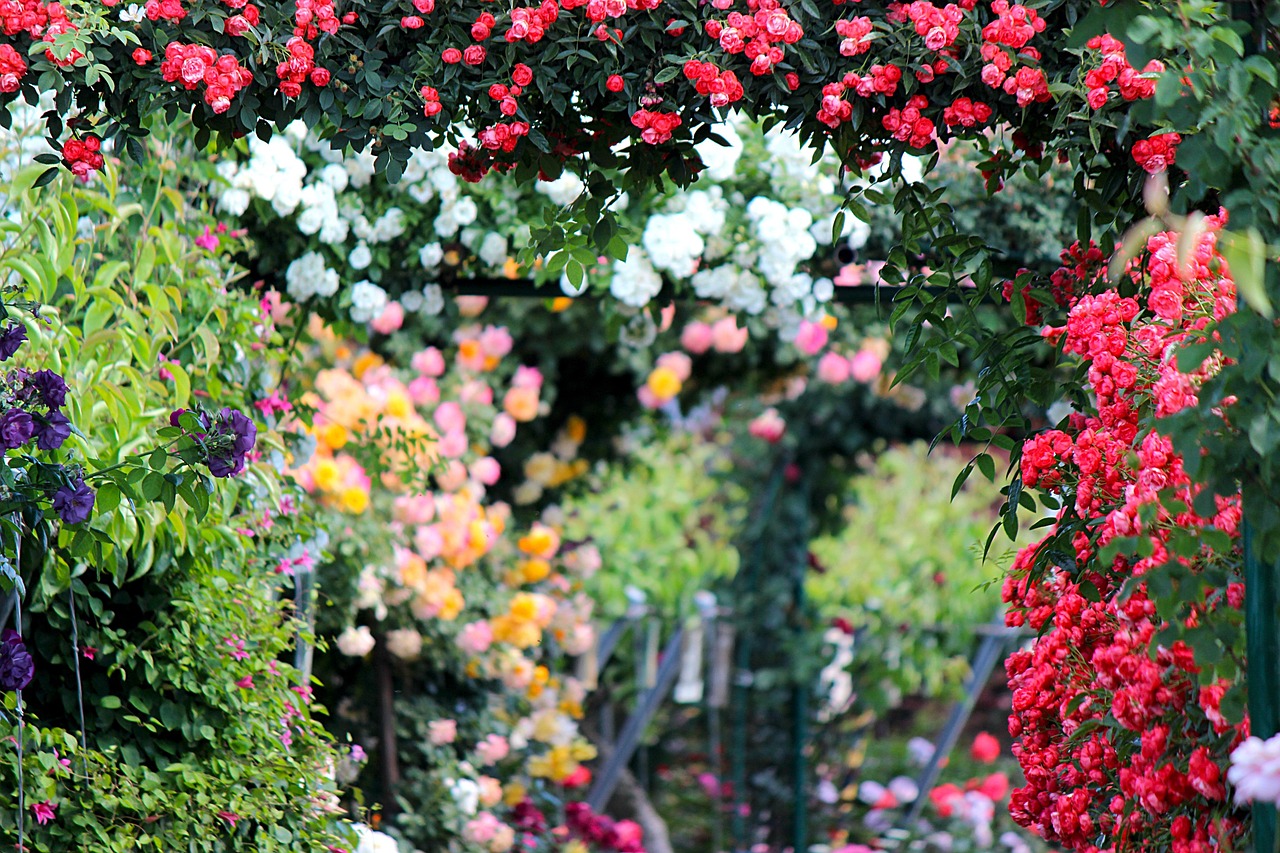
Roses have become a popular shrub plant in the landscape, especially with the advent of the ‘Knockout’ roses and other easy to grow series of varieties. But one group still doesn’t get the attention it deserves. Climbing roses can make a statement in your garden. These are varieties of roses that grow 8- to 15-feet tall, look gorgeous on an arch, trellis, or arbor and even can be grown cascading down a tall wall. If you have a vertical structure in your garden, consider planting a rose on it. That being said, you don’t have to have support for all roses. We grow ‘William Baffin’ Canadian Explorer series rose next to our house. It’s hardy to zone 5, rises up 8+ feet tall and is sturdy enough to stand on its own. It flowers consistently every year and can take our harsh winters. Some other good varieties include ‘New Dawn’. This classic climber has fragrant, double, blushed pink blooms that repeat flower in summer. It grows 12- to 15-feet tall and is resistant to the dreaded black spot disease. ‘Zephirine Drouhin’ is an old heirloom variety with double pink flowers on almost thornless, 10 foot tall stems. This everbloomer is hardy to zone 6. ‘Graham Thomas’ is a classic David Austin English climbing rose with a light fragrance on double yellow blooms. It grows 12 foot tall plant and repeats blooming.
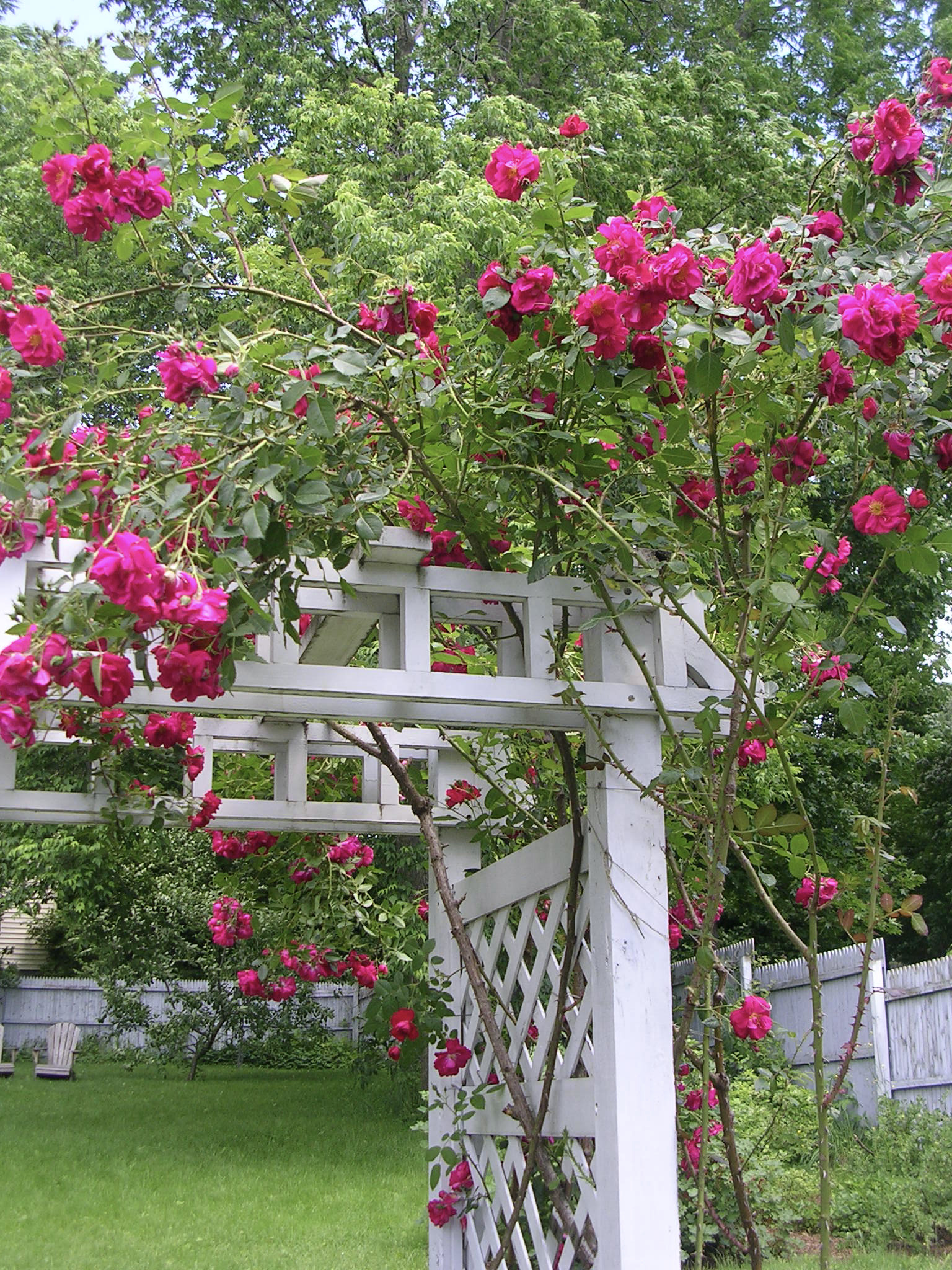
Find a location in full sun for the best flowering. Plant on well-drained soil amended with compost. If your rose is struggling, consider feeding it with an organic rose food monthly to stimulate new, more vigorous growth. Strong, thick stems are best for supporting all the side branches. Attach tall roses to a trellis, arch, or support with Velcro® brand garden ties to keep it vertical. For a natural look, allow it to cascade over a wall or fence. Prune climbing roses in late winter to stimulate better flowering. Remove dead, diseased or broken branches. Shorten lateral branches growing off the main stems to 2 to 5 buds and favor horizontal branches. Those produce the most flowers.
Go here for more on growing Climbing Roses
In Our Garden: Pest of the Month: Japanese Knotweed
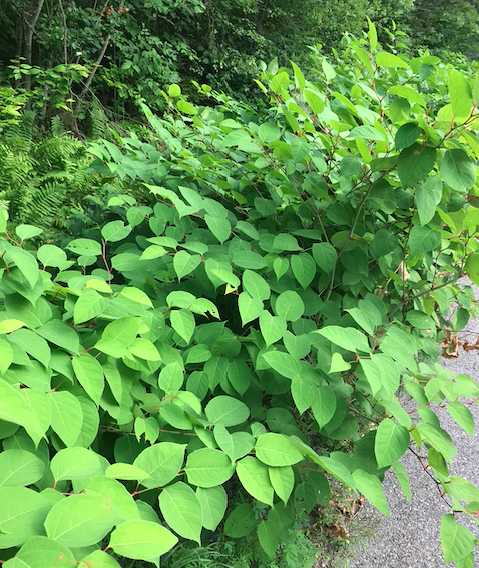
My pest of the month is a tough one. Japanese knotweed is an invasive plant from Asia that loves to grow on stream or pond banks and in wet areas. I see it often in drainage ditches along the side of roads. It’s a tough weed to control. Knotweed grows from invasive roots into a 10 to 15 foot tall wall of greenery. It flowers in summer with delicate white clusters. But it’s the roots and stems that are the issue for spreading. If a stem breaks off and flows downstream it will eventually get caught in the bank and root itself, creating more knotweeds. The roots are almost unstoppable. If any piece of root is left in the soil it will sprout into a new plant. There have been reports of gardeners covering an area of knotweed for years to kill it. While they kill the tops, the roots can stay dormant for up to 20 years and then sprout when conditions are right.
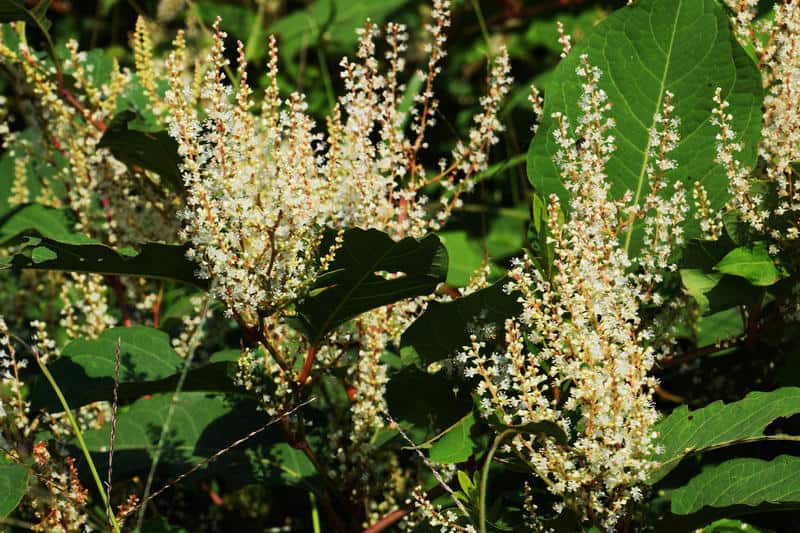
So, how to control such a beast? Diligence is key. One year of mowing and digging isn’t enough. Each year, mow or cut down the stand every 2 to 3 weeks, or whenever the plants are 6 inches tall, from May until October. Gather the cuttings and place them in black plastic garbage bags in the sun for weeks to kill them. Then, cover the stand with a heavy duty tarp used for erosion control. This will weaken the stand of knotweed. In spring after a rain, try to dig out the weaken roots as best you can. Then cover with a tarp again. You can try herbicides to kill large stands of knotweed, but don’t use it close to a waterway and use an injector or foam type. Avoid sprays that can drift. Even after using the herbicide, you’ll still have to dig and cover the area. The best you can do is remove it from a small area, then use deep edging to hopefully keep it away.



